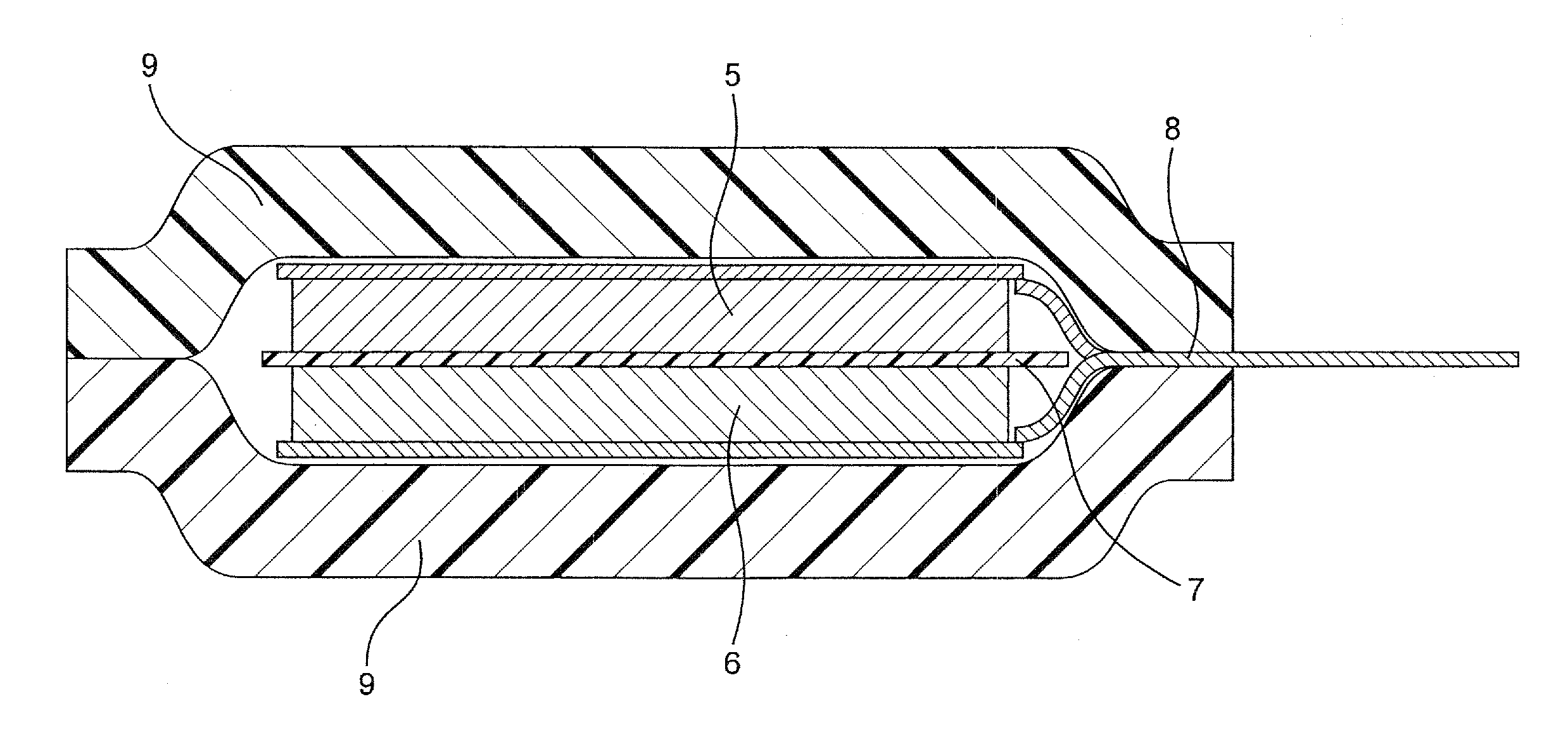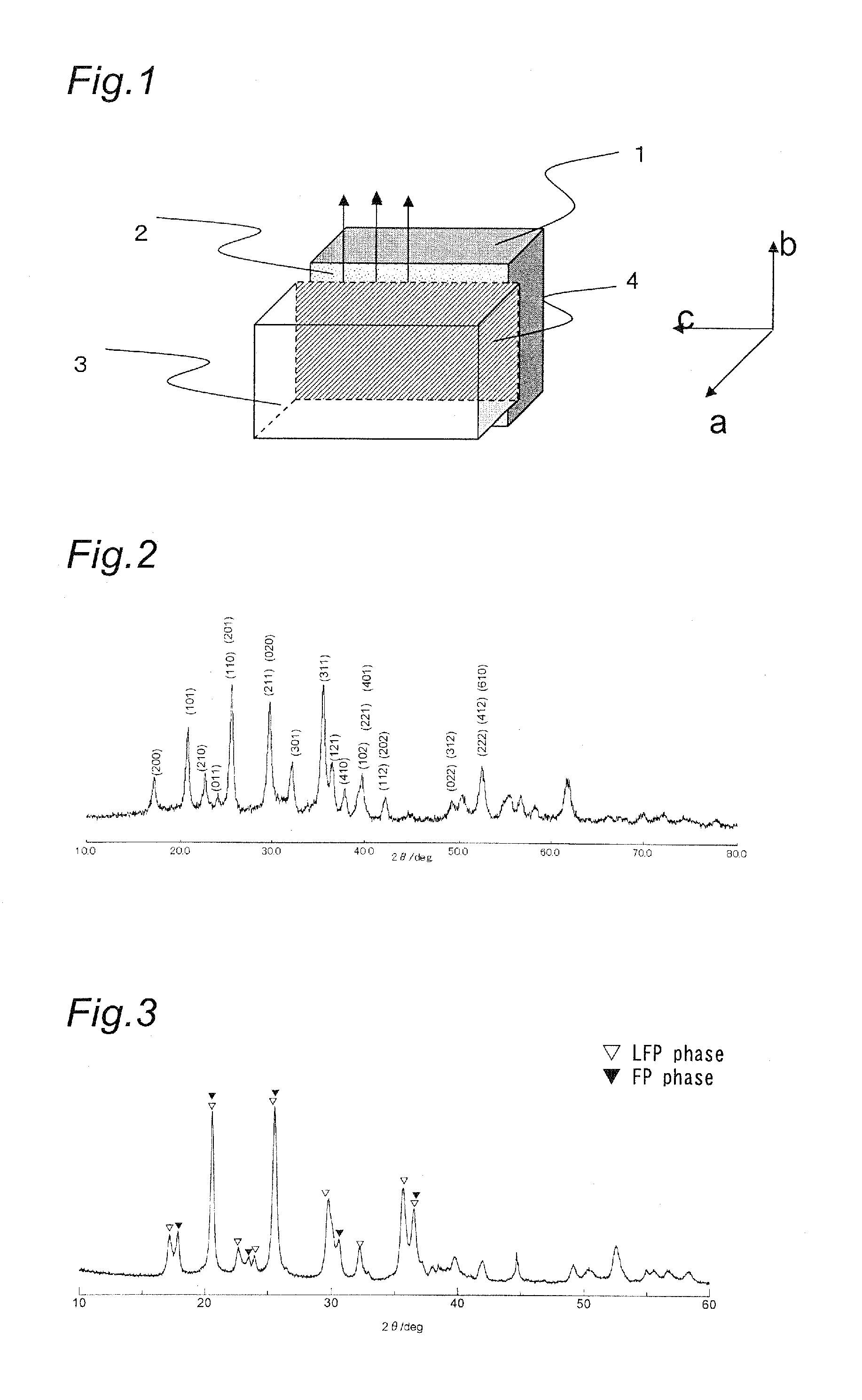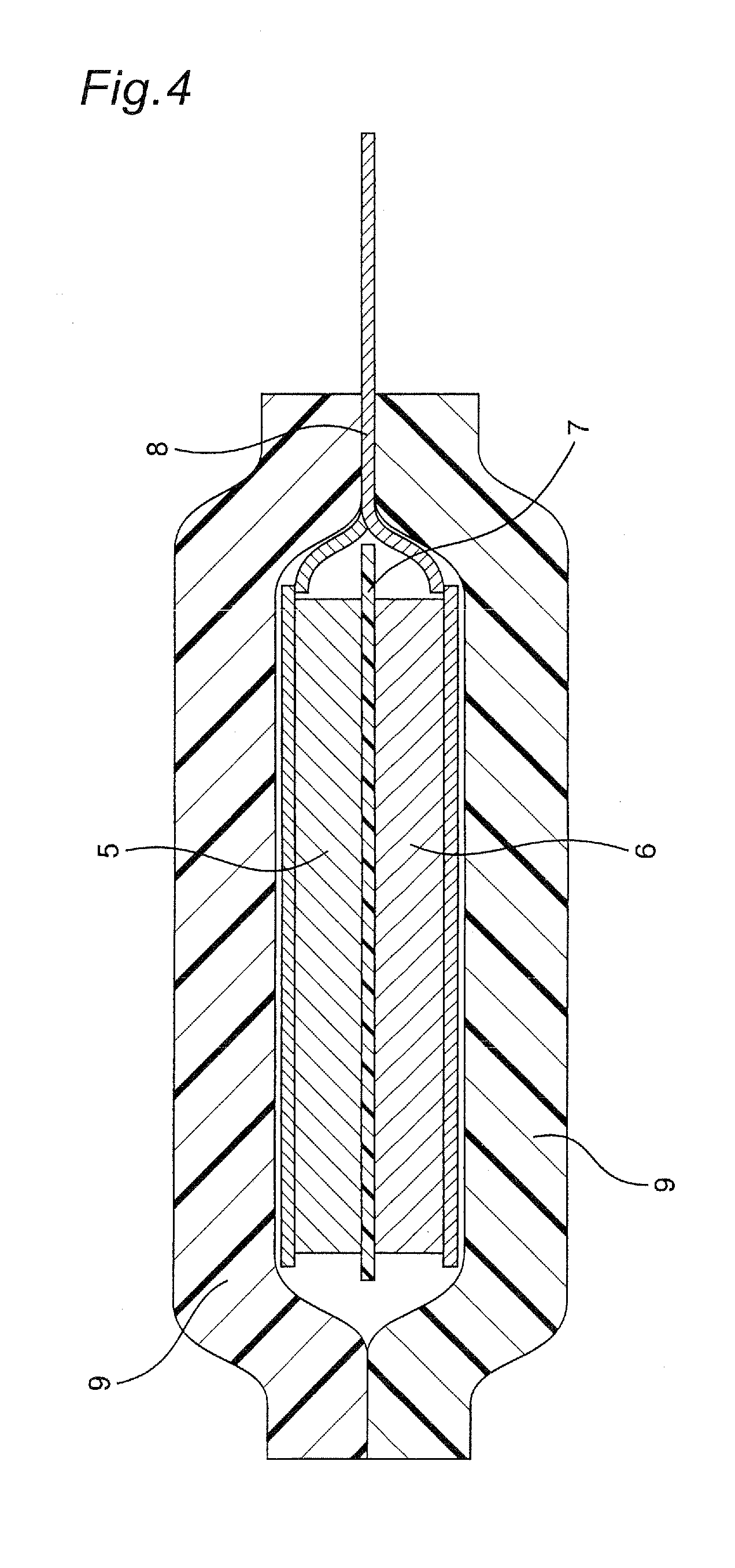Positive electrode active material, positive electrode, and nonaqueous-electrolyte secondary battery
- Summary
- Abstract
- Description
- Claims
- Application Information
AI Technical Summary
Benefits of technology
Problems solved by technology
Method used
Image
Examples
example 1
[0097]
[0098]An iron source, a lithium source, a zirconium source, a silicon source, and a phosphorus source were dissolved in a solvent in that order.
[0099]An iron source Fe(NO3)3-9H2O was weighed and dissolved completely under agitation in ethanol in a molar amount of 30 times as much as the molar amount of Li. After confirmation of complete solubilization, a lithium source LiCH3COO was weighed and then, a zirconium source ZrCl4 and a silicon source Si(OC2H5)4 were weighed, and they are dissolved in that order, to give a homogeneous solution. Finally, a phosphorus source H3PO4 (85 wt %) was weighed into the solution, which was agitated until homogeneity. The amount of the lithium source LiCH3COO was 0.9899 g, and the respective raw materials were weighed at a Li:Fe:Zr:P:Si ratio of 1:0.75:0.25:0.5:0.5 (molar ratio).
[0100]After agitating at room temperature for 1 hour, the homogeneous solution was stored in a constant-temperature oven at 60° C. for 24 hours for gelation. The contain...
example 2
[0106]A lithium-containing composite oxide was prepared in a manner similar to Example 1, except that the zirconium source, the iron source, the silicon source, the lithium source, and the phosphorus source were weighed at a Li:Fe:Zr:P:Si ratio of 1:0.85:0.15:0.7:0.3 (molar ratio) in the solubilization step. The sample obtained will be referred to as sample A2.
(Results)
[0107]The powder X-ray diffraction pattern of the composite oxide obtained was determined similarly to Example 1. An X-ray diffraction pattern similar to that in Example 1 was obtained, indicating that the sample contained a crystalline phase in the olivine-type structure formed. It was also found that there was no peak corresponding to the impurities such as ZrO2.
example 3
[0108]A lithium-containing composite oxide was prepared in a manner similar to Example 1, except that the zirconium source, the iron source, the silicon source, the lithium source, and the phosphorus source were weighed at a Li:Fe:Zr:P:Si ratio of 1:0.9:0.1:0.8:0.2 (molar ratio) in the solubilization step. The sample obtained will be referred to as sample A3.
(Results)
[0109]The powder X-ray diffraction pattern of the composite oxide obtained was determined similarly to Example 1. An X-ray diffraction pattern similar to that in Example 1 was obtained, indicating that the sample contained a crystalline phase in the olivine-type structure formed. It was also found that there was no peak corresponding to the impurities such as ZrO2.
PUM
 Login to View More
Login to View More Abstract
Description
Claims
Application Information
 Login to View More
Login to View More - R&D
- Intellectual Property
- Life Sciences
- Materials
- Tech Scout
- Unparalleled Data Quality
- Higher Quality Content
- 60% Fewer Hallucinations
Browse by: Latest US Patents, China's latest patents, Technical Efficacy Thesaurus, Application Domain, Technology Topic, Popular Technical Reports.
© 2025 PatSnap. All rights reserved.Legal|Privacy policy|Modern Slavery Act Transparency Statement|Sitemap|About US| Contact US: help@patsnap.com



